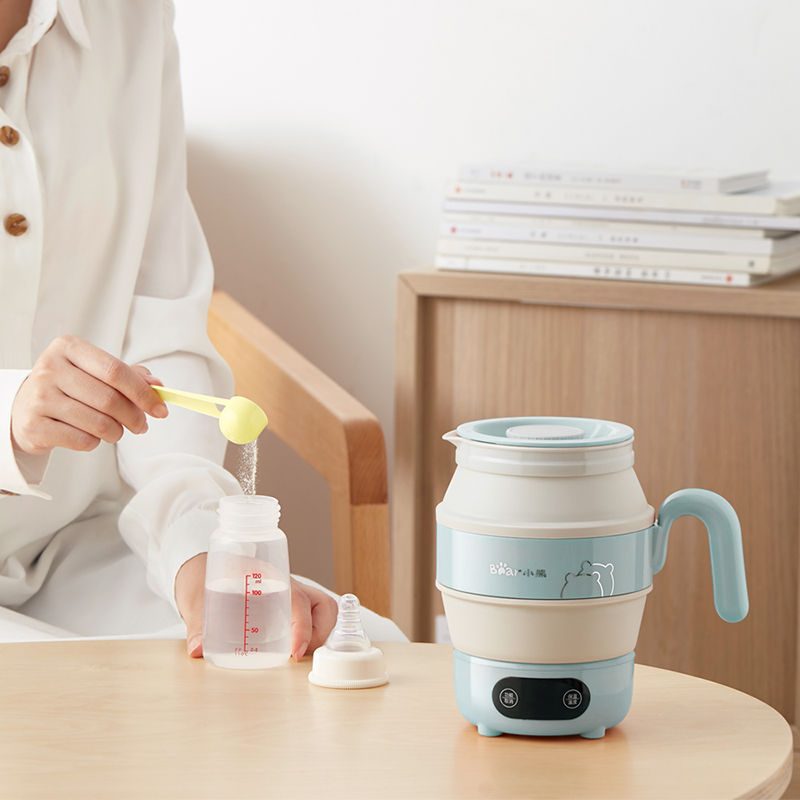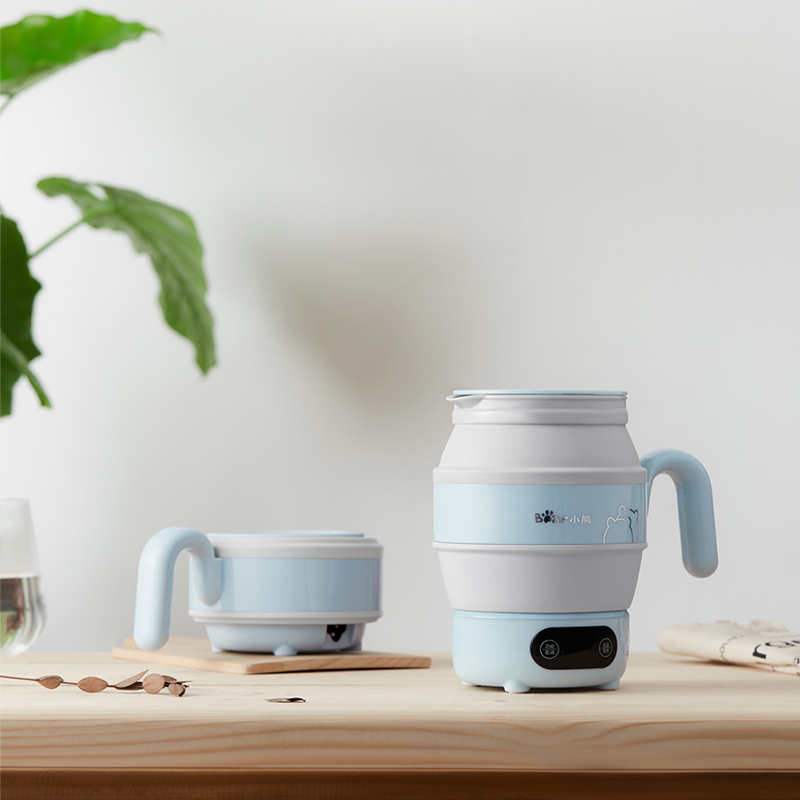Author: Site Editor Publish Time: 2025-03-29 Origin: Site
If you’re tired of using vinegar to clean your electric kettle, or perhaps you're looking for an alternative, you’re in the right place! Vinegar is often recommended as the go-to solution for descaling kettles, but there are plenty of other methods that work just as well—without the strong smell. In this article, we’ll explore various ways to clean your electric kettle without relying on vinegar, leaving you with a sparkling clean kettle that’s ready for your next cup of tea or coffee.
Keeping your electric kettle clean is essential not just for maintaining its efficiency but also for ensuring that the water tastes fresh every time. Over time, limescale (mineral buildup from hard water) can form inside the kettle, affecting both the heating efficiency and the taste of your drinks. By cleaning your kettle regularly, you ensure it works efficiently and remains hygienic.
● Prevents mineral buildup: Limescale can cause your kettle to boil water more slowly and inefficiently.
● Improves water taste: Old residues and build-up can make the water taste off or metallic.
● Extends the kettle's life: Regular cleaning helps keep your kettle in top working condition.

While vinegar is effective, it has a strong odor and may not be ideal for everyone. Luckily, there are other ways to clean your electric kettle without it. Let’s dive into some alternative solutions.
Baking soda is a gentle abrasive that can help remove stains and mineral deposits without damaging your kettle. It’s also very effective at neutralizing odors, making it a great choice if you’re sensitive to the smell of vinegar.
1. Fill the kettle halfway with water.
2. Add a teaspoon of baking soda to the water.
3. Boil the mixture and let it sit for about 15 minutes. The boiling action helps loosen any mineral deposits inside the kettle.
4. Let the solution cool and then pour it out.
5. Rinse the kettle thoroughly with clean water to remove any leftover baking soda.
This method is great for light cleaning and maintenance. For tougher buildup, repeat the process or leave the solution inside for a little longer.
Lemon juice works similarly to vinegar in breaking down limescale. It’s a natural acid that can dissolve minerals and leave your kettle smelling fresh.
1. Fill the kettle halfway with water.
2. Add the juice of one lemon or 2-3 tablespoons of lemon juice.
3. Boil the mixture and let it sit for 15-20 minutes.
4. Scrub the kettle with a soft sponge to remove any remaining scale.
5. Rinse thoroughly with clean water.
Lemon juice not only cleans the kettle but also leaves it with a pleasant, fresh scent, making it a perfect alternative to vinegar.
Citric acid is a natural descaler and is often used for cleaning purposes. It’s highly effective at removing mineral deposits from electric kettles and is a great alternative to vinegar.
1. Add one teaspoon of citric acid to the kettle.
2. Fill the kettle with water halfway and stir until the citric acid dissolves.
3. Boil the solution and let it sit for 20-30 minutes to break down any limescale.
4. Rinse the kettle thoroughly with clean water to remove any citric acid residue.
Citric acid is both powerful and safe for regular use, and it leaves your kettle free from mineral buildup without the strong odor of vinegar.
Cream of tartar is another excellent natural cleaning agent that can be used in your electric kettle. It’s a mild acid that’s often used in cooking, but it’s also great for removing stubborn stains and buildup in your kettle.
1. Add 2-3 teaspoons of cream of tartar to the kettle.
2. Fill the kettle with water halfway and stir until the cream of tartar dissolves.
3. Boil the mixture and let it sit for 20 minutes.
4. Scrub the inside of the kettle to remove any remaining deposits.
5. Rinse thoroughly with clean water.
Cream of tartar is an excellent option for those looking for a more natural solution to cleaning their electric kettle.
For regular maintenance and light cleaning, simply using dish soap and water can be an effective method. It’s perfect for keeping your kettle free from dust and grime, though it may not be as effective for heavy limescale buildup.
1. Fill the kettle with water halfway.
2. Add a small amount of dish soap to the water.
3. Boil the mixture and then let it sit for a few minutes.
4. Scrub with a soft sponge to remove any dirt or grime.
5. Rinse thoroughly to remove any soap residue.
This method is simple and works well for routine cleaning, though it might not tackle the deeper limescale issues.

Now that you know several ways to clean your kettle without vinegar, here are some additional tips for maintaining it:
● Regularly empty your kettle: After each use, empty the kettle and leave the lid open to prevent moisture buildup inside.
● Use filtered water: If you live in an area with hard water, using filtered or distilled water can help reduce the amount of limescale that forms inside your kettle.
● Clean the exterior: Wipe the outside of your kettle with a damp cloth weekly to keep it looking clean and shiny.
● Descale regularly: Even with these cleaning methods, it's a good idea to descale your kettle at least once a month, especially if you have hard water.
Keeping your electric kettle clean is essential for both efficiency and hygiene. While vinegar is often the go-to cleaner, there are many effective alternatives like baking soda, lemon juice, citric acid, and cream of tartar. These methods help keep your kettle free from limescale and residue, ensuring that your next cup of tea or coffee is fresh and enjoyable.
If you’re in the market for a high-quality electric kettle that’s easy to maintain, check out Bear Electric Appliance CO., LTD. for their range of durable and efficient products. With proper care and cleaning, your electric kettle will continue to serve you well for years to come.
A: Yes, you can use alternatives like baking soda, lemon juice, citric acid, or dish soap to clean your electric kettle.
A: It's a good idea to clean your electric kettle every 1-2 months, or more often if you notice limescale buildup.
A: Yes, lemon juice is a natural acid and works similarly to vinegar for breaking down limescale.
A: Yes, cream of tartar is effective at removing mineral buildup and stains inside the kettle.
A: Yes, descaling your kettle regularly helps maintain its efficiency and prolong its lifespan.